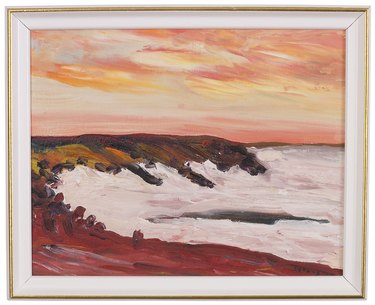Things You'll Need
Paintbrushes
Water color paints
Canvas or drawing paper
Copies of poems
Pencils
Colored pencils (optional)

Illustrating poetry is an excellent way to learn about the specific literary devices – such as imagery – used in creative writing. Poetry illustrations allow you to create a personal interpretation of the work by exploring the different layers of rhythm, character, cadence, imagery and other poetic techniques. Due to the wide variety of published poems, you can pick and choose between different time periods and styles of composition to choose a poem that best reflects your artistic style. For example, if you prefer to draw in abstract or surreal images, you may prefer a poem by writers such as Robert Creeley or E. E. Cummings.
Step 1
Read and reread the poem until you become familiar with the use of rhythm and imagery. Notice any storylines, specific characters or dialog that can be directly expressed in the illustration. Locate the beginning, middle and end of the poem, and determine how you would best illustrate the poem's conclusion or symbolism without words.
Video of the Day
Step 2
Draw an outline of your illustration using a pencil and canvas or drawing paper. Include any solid images or central themes from the poem by drawing a rough sketch of your ideas. Consider the use of storytelling elements and how you would express chronological events in a linear fashion on the page. For example, if the poem describes a cat chasing a bird, you can draw distinct scenes of the cat by itself, spotting the bird, and a separate scene of the chase.
Step 3
Paint or color your picture using watercolor paints or colored pencils. Reflect on the specific feelings or emotions the poem evokes to help choose your colors. If your poem creates a sad or melancholy mood, select cool colors such as blue or lavender to help translate those feelings in your illustration.
Step 4
Let your canvas or drawing paper dry and return to it later. Reread the poem and notice if there are any elements you would like to change or add. Continue drawing and coloring your illustration until you're confident in its ability to transfer the essence of the poem into an image.
Tip
A creative way to incorporate the rhythm into your drawing is to add elements that reflect the cadence of each line. For example, if the poem’s rhythm appears to quicken when the poet writes about a bird, you can illustrate this by having the bird in your picture rapidly flapping its wings.
Video of the Day